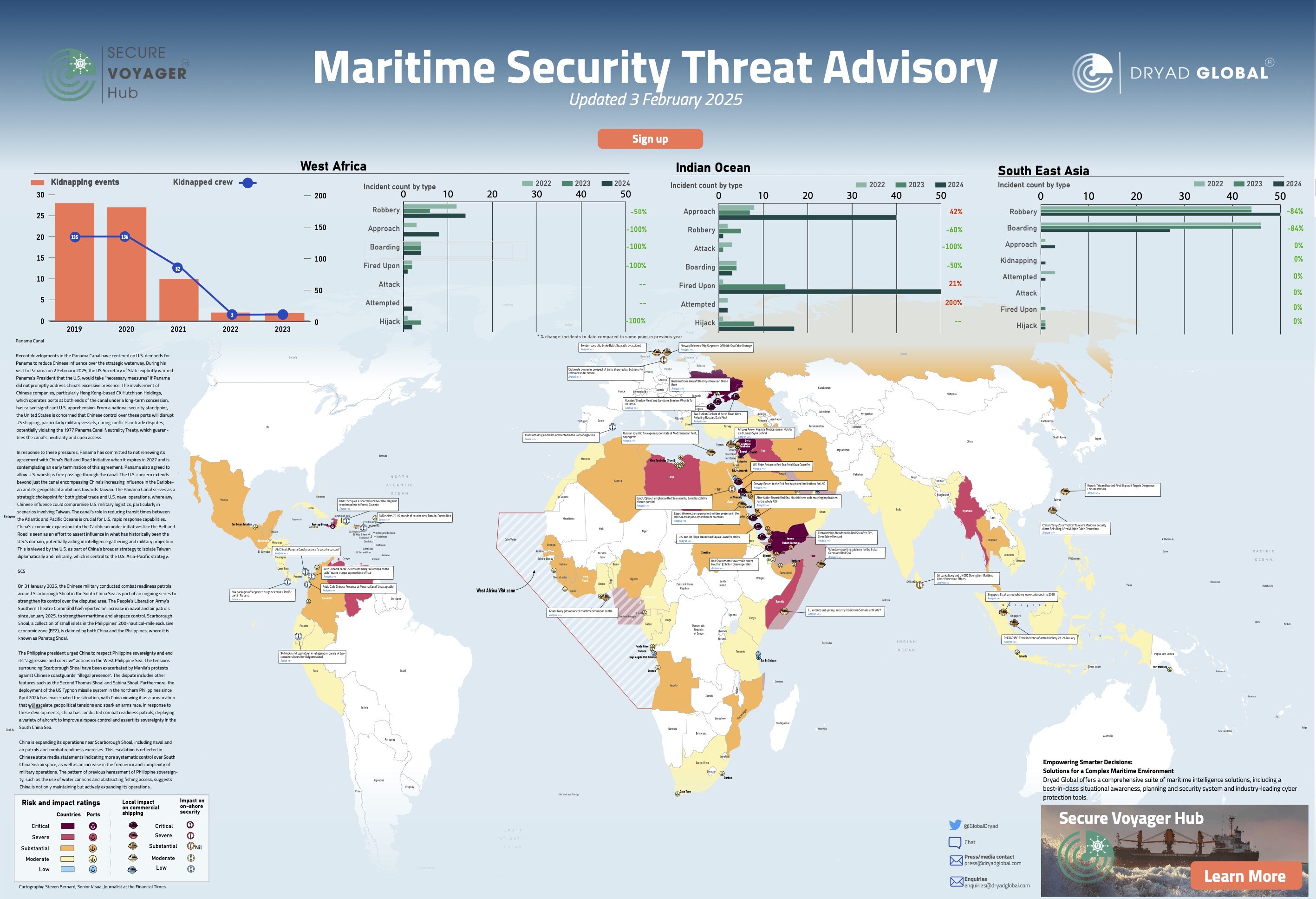4 min read

China’s military activity near Scarborough Shoal continues to escalate, with combat readiness patrols becoming more frequent. The People's Liberation Army (PLA) has intensified both naval and air operations in an effort to consolidate control over the disputed region. Scarborough Shoal, situated within the Philippines' Exclusive Economic Zone (EEZ), remains a flashpoint for regional tensions, with Manila denouncing China’s increased presence as “aggressive and coercive.”
The deployment of the U.S. Typhon missile system in the northern Philippines in 2024 has further strained relations, prompting China to ramp up its military patrols. Beijing’s state media has emphasized China’s intent to assert sovereignty over the South China Sea, with increased military exercises and airspace monitoring reinforcing this stance.
Despite a temporary ceasefire holding in the Red Sea, commercial shipping remains vulnerable. Recent developments include the abandonment of a containership after a fire and the continued transit of U.S. and UK vessels through high-risk zones. Maritime security experts continue to monitor Houthi piracy operations, which have resulted in significant financial losses from ransom payments and vessel disruptions.
-
Norwegian authorities released a vessel suspected of damaging an undersea Baltic Sea cable, citing insufficient evidence.
-
A Russian spy ship fire in the Mediterranean has raised concerns over the state of Russia’s naval fleet, with analysts suggesting this incident underscores broader maintenance and operational deficiencies.
-
The EU has extended its anti-piracy and security missions in Somalia until 2027, emphasizing the continued threat posed by maritime crime in the region.
Maritime law enforcement agencies have reported significant drug seizures across various regions:
-
791.5 pounds of cocaine intercepted near Puerto Rico.
-
504 drug packages confiscated in Panama, further underscoring the country’s role as a key smuggling route.
-
A truck loaded with narcotics was intercepted in Spain’s Port of Algeciras.
-
Sri Lanka and UNODC are strengthening maritime crime prevention efforts, with new measures introduced to counter drug trafficking and human smuggling in the Indian Ocean.
Analysis of recent maritime incidents highlights increasing security threats:
-
The Singapore Strait has seen a continued rise in armed robbery incidents, prompting authorities to issue new security advisories for transiting vessels.
-
ReCAAP ISC reported three incidents of armed robbery between 21-26 January, indicating sustained risk in Southeast Asian waters.
-
West African piracy remains a concern, with hijacking attempts continuing to challenge regional security efforts.
The MSTA-3 Feb 2025 highlights the growing complexity of maritime security threats across multiple regions. With geopolitical tensions in the Panama Canal and South China Sea, sustained piracy threats, and drug trafficking concerns, the global maritime industry must remain vigilant.
Related Posts
Dryad Global Annual Report 2022/2023: The War in..
The war in Ukraine is the most significant risk event to have disrupted global maritime trade..
Battle For Indian Ocean: How EU And India Can..
China’s strategic use of ports, as well as its growing military presence in the maritime space in..
Dryad Global Annual Report: Key challenges facing..
Dryad Global's CEO Corey Ranslem talks to Dr. Okafor-Yarwood about the key challenges facing the..




